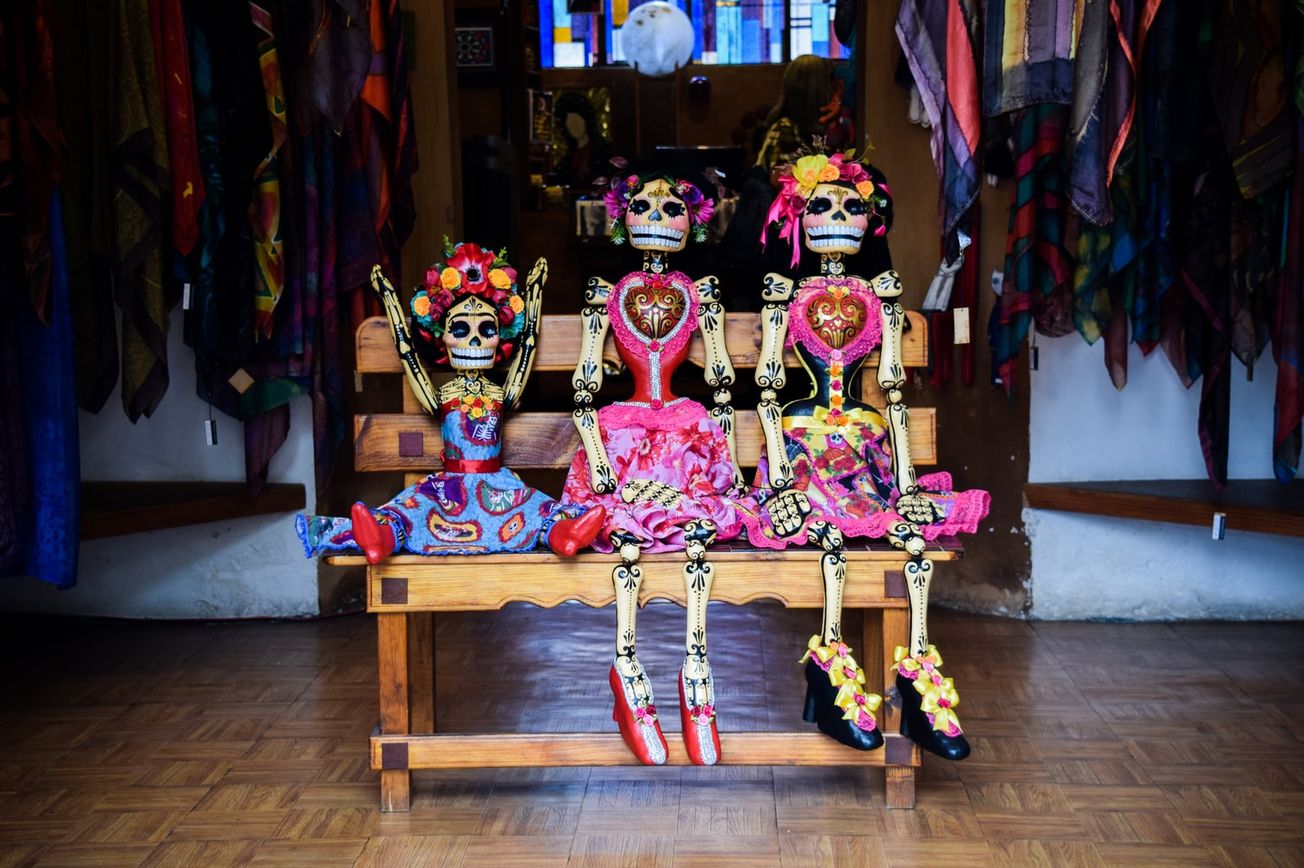By Lily Donnelly, Travel Editor
The Croft Magazine // Many know about the Day of the Dead, but few understand its true cultural significance. Allow Lily Donnelly to tell you where it comes from, what it means today, and how to celebrate it properly.
Contrary to very popular belief, the day of the dead is not merely Mexico’s version of Halloween. With roots in the Aztec world, the celebration is a culmination of centuries old tradition and Spanish colonisation, because of which the people of Latin America had to adapt their customs to catholic culture during the 16th century. The festival of both death and life calls souls from beyond the grave to join the commemorations and celebrations held by their living loved ones. Dia de los Muertos is most founded in Mexican culture, and marks more than just an annual festival in the calendar. So, before you decide to go to that Halloween party as a calaca or calvera - that’s skeleton or skull to you and me - prepare yourself to explain what’s behind the face-paint, if you can do so after a few drinks.
Taking place on the first and second of November, the days of the dead were not chosen arbitrarily - otherwise known as All Saints and All Souls day, the summoning of souls has very religious connotations, reflecting upon Mexico’s Catholic heritage. Aside from the Church, the festival coincides with the completion of the agricultural cycle – namely of maize, the country’s largest crop. This reflects upon death as part of the cycle of life, making way for new crops to grow whilst remembering what has already been harvested from earth. Bestowed a place on UNESCO’s list of Intangible Cultural Heritage of Humanity in 2008, the celebration deserves to be distinguished from its neighbour, hallows eve.
Offerings, or ofrendas, are the centrepiece of Dia de los Muertos. Relatives remember their lost ones by cooking up their favourite foods, putting up their pictures and creating altars adorned with calcas (skeletons) and calaveras (skulls), transforming death from something that one should fear into another that one should embrace.
The marigold is known as the flower of death in Hispanic culture, acting as a sensory signpost for the returning souls who follow its scent and illuminating petals to said ofrendas left by their living loved ones. Said skulls and skeletons decorate homes, towns and people alike, and are always painted with a smile so as to laugh in the face of darkness. The renowned Mexican poet, Octavio Paz, wrote that ‘The Mexican…is familiar with death. [He] jokes about it, caresses it, sleeps with it, celebrates it. It is one of his favorite toys and his most steadfast love’ perfectly articulating the defiance of death that this country is proud to celebrate.
...the festival coincides with the completion of the agricultural cycle...[reflecting] upon death as part of the cycle of life, making way for new crops to grow whilst remembering what has already been harvested from earth.
Every year, there are altars both in private and public – one is a place for family members to come home to, and the other calls upon the ancestors of the nation to pay visit. An emblematic example is Frida Kahlo, who represents a cornerstone of Mexican cultural heritage and has become a dearly loved one of the country herself. The alters become a piece of vibrant art themselves, attracting many tourists each year to feast their eyes upon the spectacle of the spirit.
A film that encapsulates this (with a rather impressive 97% on rotten tomatoes) comes from Disney, and is none other than 2017’s Coco. Frida makes a grand appearance as one of the great departed, and is just one example of how she has become one of the most recognisable faces at the festival.
If reading week happens to fall on the first weekend of November, Dia de los Muertos is a festival you will not be likely to forget.
Featured: Unsplash/ Valeria Almaraz
Find a copy of The Croft Magazine inside every copy of Epigram









